10/06/22 update: I didn't provide enough details on this project before, so I'm editing this for clarity and to cover a lot more specifics.
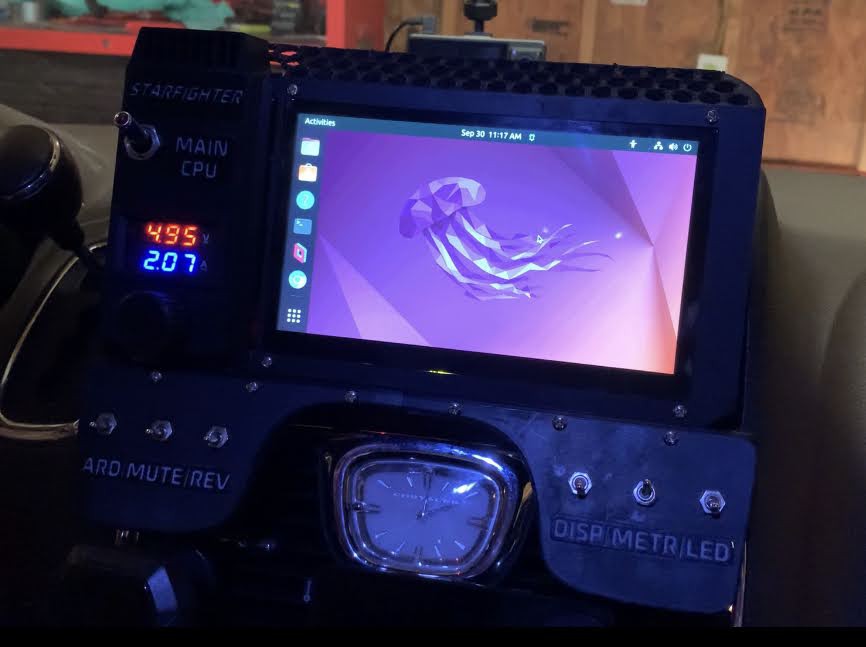
It turns on!!!
My car is very special to me, and I spend a lot of time driving it, but the one issue that always has bothered me is that the factory radio simply isn't good. I would mainly use it for its bluetooth functionality and stream music from my phone, which gave me the most control over what it is that I'm listening to. That bluetooth functionality worked, but like, barely. It was aggravating to use and basic functions like pairing a new device were unreasonably difficult. So, around the end of 2021, I started brainstorming ideas for my own custom radio/head unit replacement!
Here were the design considerations that I landed on: I wanted to ditch the bluetooth entirely, all music should either be streamed or saved locally. It should also retain 100% functionality if my phone dies or gets left at home or whatever. It should be relatively easy to use, even for someone who's never seen it before, and obviously shouldn't be distracting or dangerous while driving. That being said though, it would be pretty sick to be able to watch youtube or something while, say, waiting in a drive thru line. I also desired built in GPS functionality and, if possible, access to the backup camera feed at any time (still working on that one).
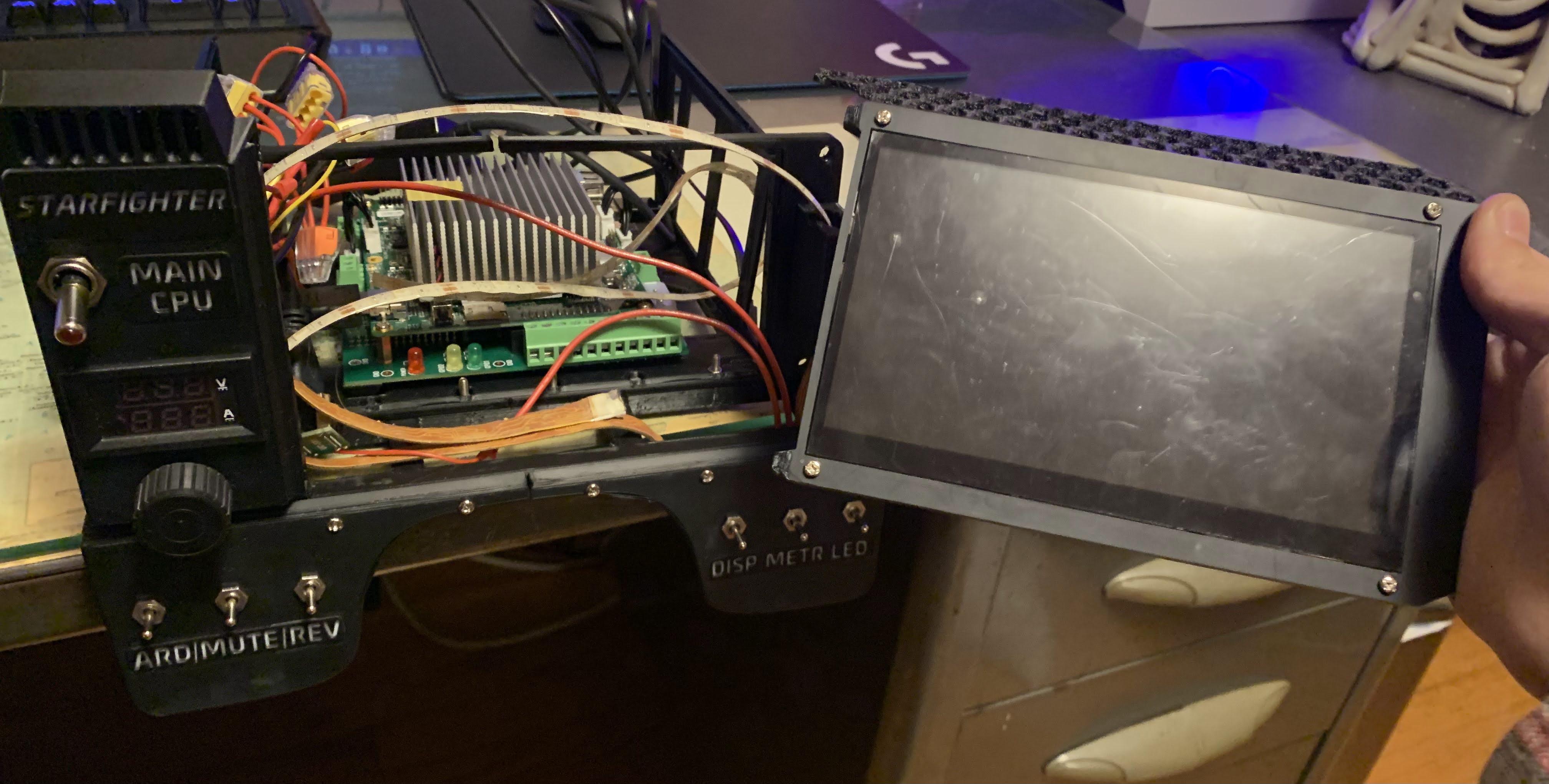
Starfighter as of 10/06/22.
Disclaimer: Starfighter is definitely still incomplete. I was only able to get so much of it done before the contest deadline, so I worked to get all of the parts from CAD printed out and do some basic wiring to submit what I had, but I'm going to keep working on it. I'll update this page as I go along. For now though, I'll outline what has been done and what is planned for the future.
So, as it stands right now, Starfighter is an Atomic Pi (more on that later) x86 single-board computer powered by a 75W DC-DC converter to regulate the 12-14V of my car battery down to 5V. I've experimented with different linux distros to run on it and right now it runs ubuntu with a couple basic modifications, although I think I'm still going to change this later. The OS runs on the Atomic Pi's internal eMMC, but that's only 16GB so I've also plugged in a 128GB micro SD card. I may upgrade to a real SSD later if speed or reliability becomes an issue. Internet connectivity is handled by a portable 5G hotpot that is connected via ethernet, and it is usually pretty speedy. The main interface is a 7" Uctronics touch display connected via HDMI. In my current setup that display needs two micro USB connections, one for power and one for touch controls. The Atomic Pi has a USB port deficiency, so those two connections come from a 4-port powered USB 3.0 hub connected to the Pi's single USB 3.0 port. Also connected to that hub is the dongle for a small wireless keyboard/trackpad combo that has been waiting for years in my junk drawer for a project like this. I have a rotary encoder and knob for volume control, but that's not hooked up yet. You'll notice that Starfighter has a number of toggle switches placed around the front panel, and while most of them don't do anything just yet, I have wired two of them up. The "MAIN CPU" switch of course turns on the Atomic Pi, while the "METR" switch near the bottom right toggles power to a cheap power meter that I found on Amazon. It's been wired to display the voltage as well as current flowing through my "main power bus".
Precise power distribution is an important part of this project, and while I'm no electronics expert I think I came up with an interesting solution. If I were to do purely point-to point wiring with soldered connections, in some places I would end up with like 6-8 wires all terminating at the same place. That didn't seem like a good solution, so instead I picked up a couple packs of these wiring connectors from Home Depot for a couple bucks. I used the 4-port ones the most, and...
Read more » thesebelik
thesebelik


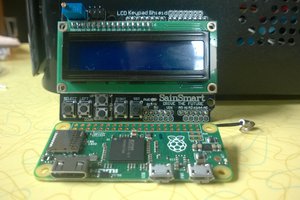
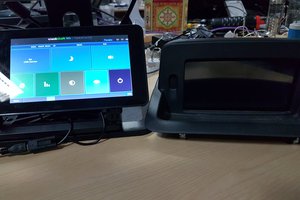
 Craig Hissett
Craig Hissett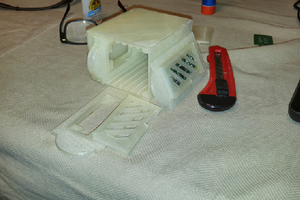
 txdo.msk
txdo.msk
I'd expect the reason your radio needs to be connected for the blind spot detection system to work is because if the radio is disconnected, there's nothing to power the speakers. Assuming that there's an audible warning that occurs when the rear proximity sensors detect something, not having the radio connected would disable that sound. In the automotive industry anything safety related like that is top priority.
Cool build!